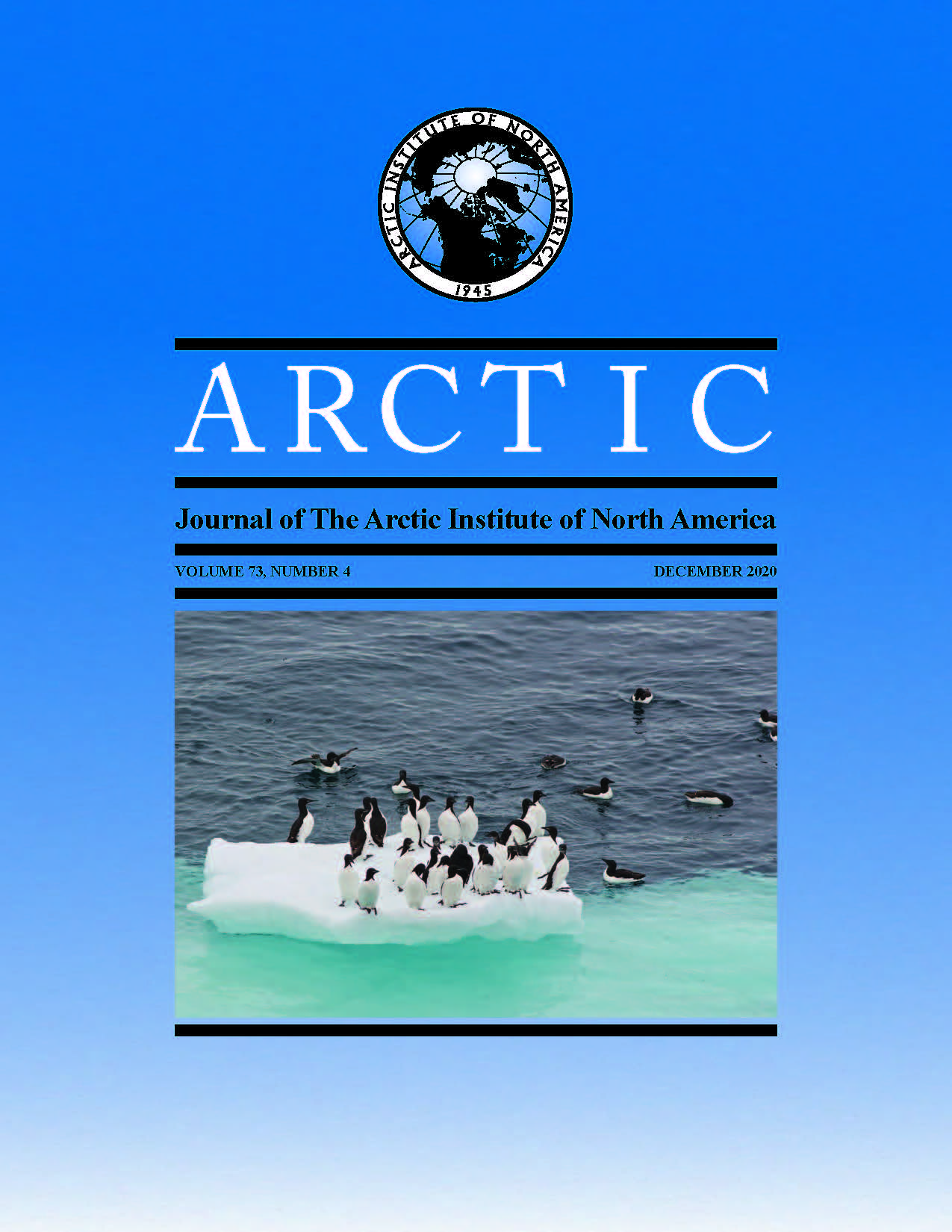Effects of Fish Populations on Pacific Loon (Gavia pacifica) and Yellow-billed Loon (G. adamsii) Lake Occupancy and Chick Production in Northern Alaska
DOI :
https://doi.org/10.14430/arctic71533Mots-clés :
Plaine côtière de l’Arctique; lacs de l’Arctique; processus ascendant; communauté de poissons; réseau trophique; Gavia adamsii; Gavia pacifica; habitat de lac; modélisation de l’occupation; occupation du territoireRésumé
Les populations de prédateurs sont vulnérables aux changements de répartition ou de disponibilité des proies. En raison du réchauffement des températures, on prévoit que les écosystèmes lacustres de l’Arctique changeront pour ce qui est du régime hydrologique, des niveaux d’eau et de la connectivité avec d’autres lacs. Nous avons examiné des lacs du nord de l’Alaska pour comprendre comment les changements en matière de répartition ou de disponibilité des poissons peuvent avoir des incidences sur le taux d’occupation et sur le succès de reproduction du huart du Pacifique (Gavia pacifica) et du huart à bec blanc (G. adamsii). Ensuite, nous avons modélisé l’influence de la présence et de l’abondance de cinq espèces de poissons de même que les caractéristiques physiques de lacs (comme la connectivité hydrologique) par rapport au taux d’occupation lacustre des huarts et à la production d’oisillons. La présence du dallia (Dallia pectoralis) avait une influence positive sur l’occupation et la production d’oisillons chez le huart du Pacifique, ce qui suggère que les espèces de poissons au petit corps constituent une proie importante pour les oisillons. Aucune caractéristique de l’abondance des espèces de poissons n’a eu d’influence sur l’occupation lacustre du huart à bec blanc. L’occupation du huart à bec blanc a plutôt été influencée par les caractéristiques physiques des lacs qui contribuent aux populations de poissons persistantes, comme la taille du lac et la proportion du lac qui ne gelait pas en hiver. Toutefois, aucune de ces variables n’a exercé d’influence sur la production d’oisillons. La probabilité qu’un territoire inoccupé devienne occupé par le huart au bec blanc au cours d’une année subséquente était faible, et aucun oisillon huart n’a été élevé avec succès dans des territoires d’oisillons anciennement inoccupés. En revanche, les territoires inoccupés avaient une beaucoup plus grande probabilité de devenir occupés par les huarts du Pacifique, ce qui suggère que les huarts à bec blanc ont des exigences strictes en matière d’habitat et que le nombre de lacs convenant à la reproduction risque d’être limité. Les territoires qui étaient occupés avaient de fortes probabilités de rester occupés par les deux espèces de huarts.



